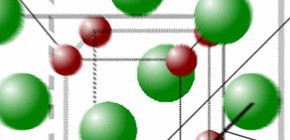
Quantum tunneling effects found in Solid Oxide Fuel Cell (SOFC) working at low temperature
a giant step toward SOFC operated at room temperature
Under the leadership of Professor Hideaki KASAI (Graduate School of Engineering, Osaka University) a group of researchers has developed quantum dynamics simulation methods for the quantum states of hydrogen on solid surfaces (Kasai Theory). In February 2013, the group published that quantum tunneling effects contributed to hydrogen reaction at a fuel electrode (anode) in the polymer electrolyte fuel cell (PEFC).
This time, the group has clarified that quantum tunneling effects contributed to oxygen ion conduction in the electrolyte of Solid Oxide Fuel Cell (SOFC), producing the highest power generation efficiency and succeeded in finding new materials and device structures enabling operation at the temperature of 300 degrees C.
Clean fuel cells as an alternative to fossil fuels are being promoted as a technology for solving environmental and energy problems facing the world and for achieving a low-carbon society. In particular, SOFC generating power from oxygen in the air and hydrogen from city gas has drawn a great deal of attention. SOFC doesn't use precious metals as catalyst materials, so it can be used to realize high efficiency, low cost, and small size.
SOFC working at a high temperature of 750 degrees C or higher tend to cause damage and deterioration in the electrolyte. Thus, lowering the operating temperature is desired; however, lower operating temperature reduces power generation capability. Therefore, an electrolyte with low electrical resistance at low temperature is needed.
There is no difference in power generation capability between PEFC and SOFC; however, SOFC has higher power generation efficiency than PEFC does so it can produce more electric energy from raw fuel. Moreover, SOFC's structure is simple so it can be reduced to half in size and to two thirds in weight of current ENE FARM, a household fuel cell cogeneration system.
Applying first principles calculation for quantum (Hyper-Naniwa) to SOFC, this group established Computational Materials Design (CMD) and succeeded in designing SOFC working at low temperature of 300 degrees C by clarifying new materials and reaction mechanism.

Related link







